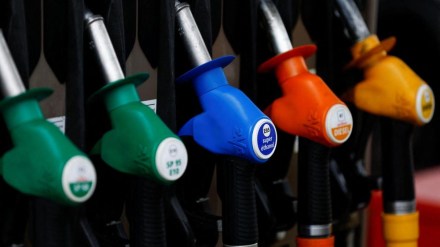IN RECENT WEEKS, concerns have been expressed over big fuel efficiency drops and engine damage in vehicles using E20 petrol. There were also apprehensions that insurers may not honour motor insurance policies in case of engine damage due to usage of incompatible fuel, especially after select carmakers reportedly said E20 fuel hadn’t been tested for compatibility with older vehicles. While India had been rolling out E20 fuel since 2023, older blends like E5 and E10, considered to be more compatible with older vehicles, were also available. However, since the last few months, these older fuel mixes are no longer available. Signages at petrol pumps asking customers to verify with their auto makers on the suitability of E20 prior to fuelling added to the fears.
That led to the PIL seeking directions to ensure that petroleum companies continued to make ethanol-free petrol available in the market, alongside proper labelling of E20 fuel pumps. Though the court dismissed the petition, it directed authorities to ensure that consumers are informed about the ethanol compatibility of their vehicles at the time of fuel dispensing.
What is ethanol blending?
ETHANOL IS AN alcohol-based biofuel that is typically produced from plant sources such as sugarcane or corn. Ethanol blending in petrol is part of a national programme to reduce reliance on fossil fuels, decrease greenhouse gas emissions, and promote sustainable energy alternatives. The blending rate has increased nearly 13x over the last 11 years. E20 petrol means 20% concentration of ethanol in petrol. Modern engines are capable of handling up to E85 petrol.
A NITI Aayog report in June 2021 had said that a successful E20 programme could save India around Rs 30,000 crore annually in fuel import costs and also offer “equivalent efficiency at lower cost than petrol”. That report had acknowledged that blending ethanol up to 20% could reduce fuel efficiency by 6-7% in four-wheelers and 3-4% in two-wheelers. It had said that retail price of such fuels “should be lower than normal petrol to compensate for the reduction in calorific value”.
What is the auto industry saying?
LAST WEEK, THE Automotive Research Association of India (ARAI) and the Society of Indian Automobile Manufacturers (SIAM) asserted that there is no evidence of vehicle breakdowns linked to E20. “Legacy vehicles already running on E20 fuel have not reported any complaints,” the industry bodies said. SIAM executive director Prashant K Banerjee said, “Millions of vehicles are running and plying E20 for quite some time now, not a single vehicle breakdown has been reported.” He clarified that the drop in efficiency with E20 is “typically between 2% and 4%, depending on driving habits, maintenance, and other factors”. On concerns about potential warranty violations due to the use of E20 in non-compliant vehicles, Banerjee said, “OEMs will honour warranty for vehicles up to E20 without any ifs and buts.”
On the lack of lower-ethanol petrol options at fuel stations, PS Ravi, director (downstream) at the Federation of Indian Petroleum Industry (FIPI), argued that reverting to lower blends would “undo the gains” of the programme.
Impact of the ethanol blending programme
INDIA HAS ACHIEVED 20% ethanol blending in petrol—five years ahead of the original target of 2030. Since 2014-15, the ethanol blending initiative has saved India `1.44 trillion in foreign exchange. For FY2025, savings are projected at Rs 43,000 crore. Farmers have benefited, with payments worth Rs 1.25 trillion disbursed so far. Ethanol procurement of 11-12 billion litres this year is expected to fetch farmers around Rs 85,000 crore, said FIPI’s Ravi. Union minister for road transport and highways Nitin Gadkari had said that converting agricultural surplus into biofuels has improved farm incomes: corn prices have risen even as acreage has doubled or tripled in Bihar and Uttar Pradesh. Ethanol production has rescued the sugar industry from cane payment delays, allowing timely compensation to farmers. “Around 75% of the industry would have collapsed without ethanol,” he said.
Biofuel blending in diesel next
BUILDING ON THE success of ethanol-petrol blending, the government is now looking at rolling out biofuel blending in diesel, with plans to blend 10% isobutanol under the biodiesel programme. Last month, Gadkari had said that research, development, and standard-setting for isobutanol—a promising alternative biofuel—are in progress. India’s diesel consumption at 91 million tonne annually is two to three times higher than that of petrol. Reports say construction equipment vehicles — heavy carriers, cranes, bulldozers, and other large machinery — could be the first to face mandatory biofuel blending. In its FY24 annual report, the Indian Construction Equipment Manufacturers Association had said it is working with the ARAI to develop new standards for the production of construction equipment vehicles that would run on alternative fuels such as compressed natural gas, hydrogen, biodiesel, and hybrid fuels.
